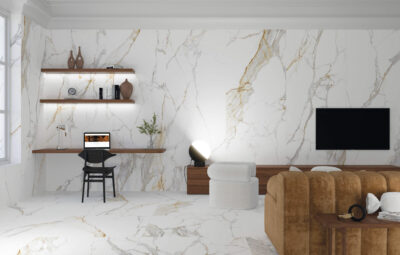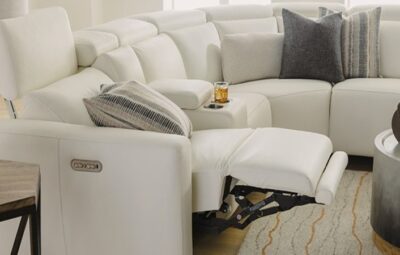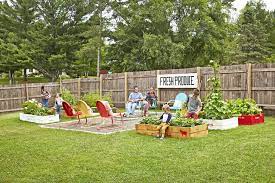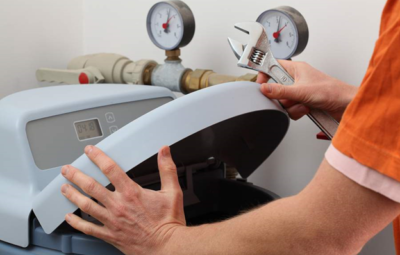The kitchen floor is one of the most heavily used surfaces in the home, exposed to spills, heavy foot traffic, and frequent cleaning. Choosing the right flooring is essential to creating a kitchen that’s not only stylish but also durable and easy to maintain. The best kitchen flooring options range from classic choices like tile and hardwood to modern materials like vinyl and laminate, each offering different benefits, costs, and maintenance requirements. Knowing the pros and cons of each flooring type, along with how it fits your lifestyle and budget, will help you make an informed decision that enhances both the look and function of your kitchen.
1. Choosing Kitchen Flooring
Kitchen floors take a lot of wear and tear, from spills and stains to the occasional dropped pot. Selecting a durable flooring material is crucial to ensure that your floor can stand up to daily kitchen activities without showing damage. With the right choice, a durable floor will also add to your kitchen’s resale value, making it a worthwhile investment that lasts for years.
1.1 Balancing Style and Practicality
While durability is essential, the kitchen floor also plays a huge role in the overall design. Finding a floor that complements your kitchen’s color scheme and style is important for a cohesive look. However, it’s also essential to choose a material that is practical for your cooking habits, cleaning preferences, and lifestyle. Balancing these factors will help you choose a floor that meets both aesthetic and functional needs.
2. Popular Types of Kitchen Flooring Materials
Each flooring material offers unique advantages, textures, and styles, making it important to understand how each option performs in a kitchen setting. From traditional tiles to budget-friendly vinyl, exploring the characteristics of different materials can help you decide on the best fit for your home.
2.1 Ceramic and Porcelain Tile
Ceramic and porcelain tiles are among the most popular choices for kitchen floors due to their durability and water resistance. These tiles come in a wide variety of colors, shapes, and designs, allowing you to customize your look easily. Porcelain tiles, in particular, are more dense and less porous than ceramic, making them highly resistant to stains and moisture.
2.2 Hardwood Flooring
Hardwood floors bring warmth and elegance to the kitchen, making them a popular choice for open-concept designs. With proper sealing and maintenance, hardwood can withstand kitchen traffic, although it is more vulnerable to moisture than other materials. Hardwood options like oak and maple are especially durable, and engineered hardwood is another option that offers better moisture resistance.
3. Factors to Consider When Choosing Kitchen Flooring
Selecting the right kitchen flooring involves thinking about factors like durability, maintenance, comfort, and compatibility with your kitchen’s design. These factors will help narrow down the options and ensure the floor aligns with both your style and lifestyle.
3.1 Durability and Maintenance Requirements
Kitchen flooring should be tough enough to resist stains, scratches, and heavy use. Tile and vinyl are particularly low-maintenance, while hardwood may require extra care and sealing to keep it looking good. Knowing the level of maintenance each type of flooring needs can help you choose a floor that suits your cleaning habits and longevity expectations.
3.2 Comfort and Safety
Comfort is essential in a kitchen where people often stand for long periods, so flooring that provides some cushioning—like vinyl or cork—can be beneficial. Additionally, certain materials, like ceramic tile, can be slippery when wet. Safety features, like slip-resistant finishes or choosing less polished tile, can help prevent slips and falls, especially if the household includes young children or elderly family members.
4. Budget-Friendly Flooring Options
Remodeling on a budget doesn’t mean sacrificing quality or style. Many cost-effective flooring options deliver durability and aesthetics without high costs, making it possible to update your kitchen floor without overspending.
4.1 Vinyl Flooring
Vinyl flooring is one of the most budget-friendly kitchen flooring options and is available in sheets, tiles, and planks. Modern vinyl can mimic the look of natural materials like wood and stone, and it’s waterproof, durable, and easy to clean. Vinyl is comfortable underfoot and provides a good balance of affordability and resilience, making it a great option for busy kitchens.
4.2 Laminate Flooring
Laminate is another budget-friendly option that mimics the appearance of wood or tile. It is resistant to scratches and easy to install, making it a popular choice for DIY remodels. While not as moisture-resistant as vinyl, high-quality laminate is a good choice for kitchens with minimal water exposure. Laminate offers style at a fraction of the cost of natural materials.
5. Stylish and High-End Flooring Options
For homeowners looking to make an upscale investment, certain materials offer both luxury and durability. High-end flooring can elevate your kitchen’s appearance and provide long-lasting value with proper care.
5.1 Natural Stone Flooring
Natural stone, such as marble, slate, or travertine, adds a unique, luxurious look to the kitchen. Each stone has its own texture and color variations, creating a one-of-a-kind appearance. While natural stone requires sealing to protect against stains and moisture, it’s incredibly durable and can last for decades with proper care. Stone is ideal for adding elegance and a timeless appeal to a kitchen.
5.2 High-Quality Hardwood
For those who love the look of wood, high-quality hardwood floors offer a classic, rich look. Exotic hardwoods like Brazilian cherry or mahogany are particularly beautiful, adding warmth and sophistication to any kitchen. With regular maintenance and care, high-end hardwoods can withstand kitchen conditions while adding value to the home.
6. Eco-Friendly Flooring Choices
Sustainable kitchen flooring options are increasingly popular, allowing homeowners to reduce their environmental impact while enjoying stylish and functional floors. Eco-friendly materials offer durability and unique aesthetics, making them a great choice for environmentally conscious remodels.
6.1 Bamboo Flooring
Bamboo is a renewable resource that grows quickly, making it an eco-friendly flooring option. It’s highly durable, water-resistant, and available in various shades. Bamboo’s natural grain pattern adds warmth and a modern look to the kitchen. With proper maintenance, bamboo can withstand heavy use, making it a practical and stylish choice.
6.2 Cork Flooring
Cork flooring is another sustainable option that’s comfortable underfoot, insulating, and naturally resistant to mold and mildew. It’s a renewable material harvested from cork trees and offers a cushioned surface ideal for standing. Cork comes in a variety of colors and patterns and requires occasional sealing to protect it from spills and moisture.
7. Matching Kitchen Flooring with Overall Style
Choosing a floor that complements your kitchen’s design style can create a cohesive, polished look. Flooring should align with the overall aesthetic of the kitchen, whether that’s modern, rustic, or traditional.
7.1 Modern and Minimalist Kitchen Styles
For a modern kitchen, materials like large-format tile, polished concrete, or sleek vinyl in neutral colors work well. These materials create a clean, streamlined look that enhances minimalist designs. Shades like gray, black, and white are popular choices, and modern kitchens often benefit from the uniform look of materials like polished tile or concrete.
7.2 Rustic and Farmhouse Kitchen Styles
Rustic kitchens are often enhanced by warm, natural materials. Hardwood or engineered wood with a distressed finish works beautifully in farmhouse kitchens, adding warmth and texture. Natural stone or even terracotta tiles can also add character to a rustic kitchen, complementing earthy colors and natural finishes for an inviting atmosphere.
8. Conclusion
Choosing the right flooring for your kitchen remodel is essential to create a space that’s both functional and beautiful. From budget-friendly vinyl and laminate to high-end natural stone and hardwood, there are flooring options to suit every style and budget. Understanding each material’s durability, maintenance requirements, and compatibility with your kitchen’s design will help you make a confident choice. The right flooring can enhance your kitchen’s aesthetic, withstand daily use, and even increase the value of your home, making it a valuable investment in both form and function.







